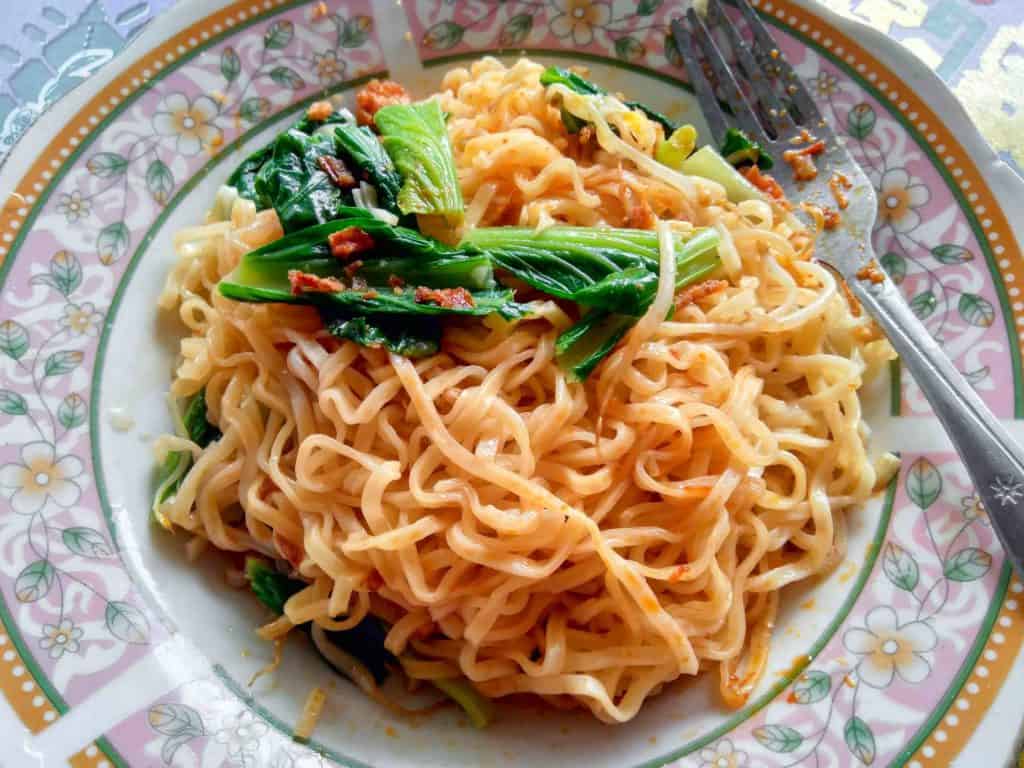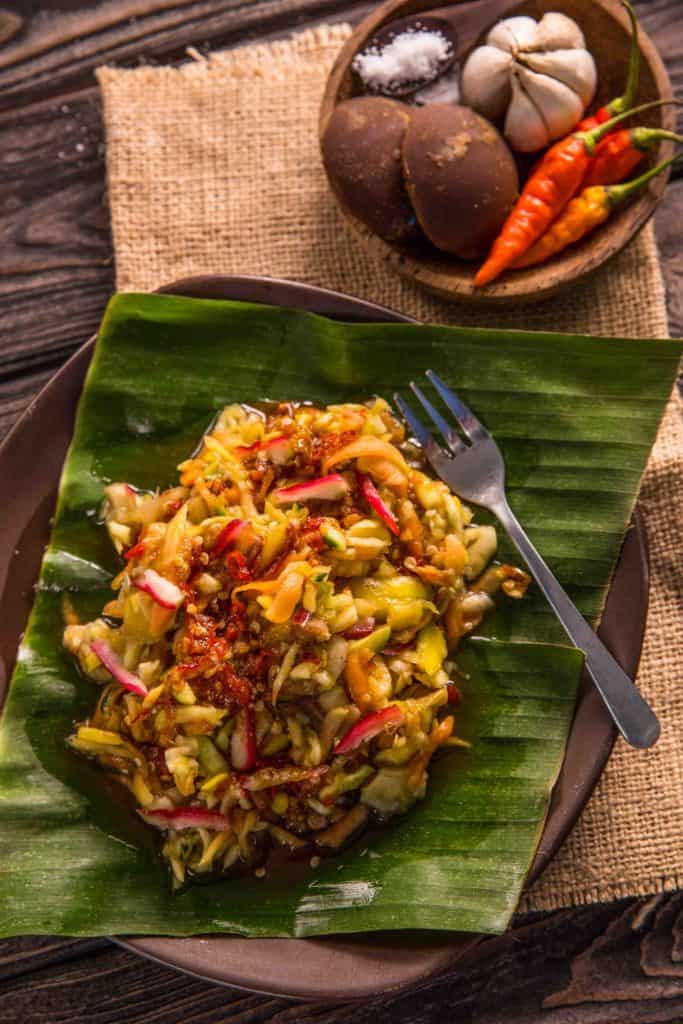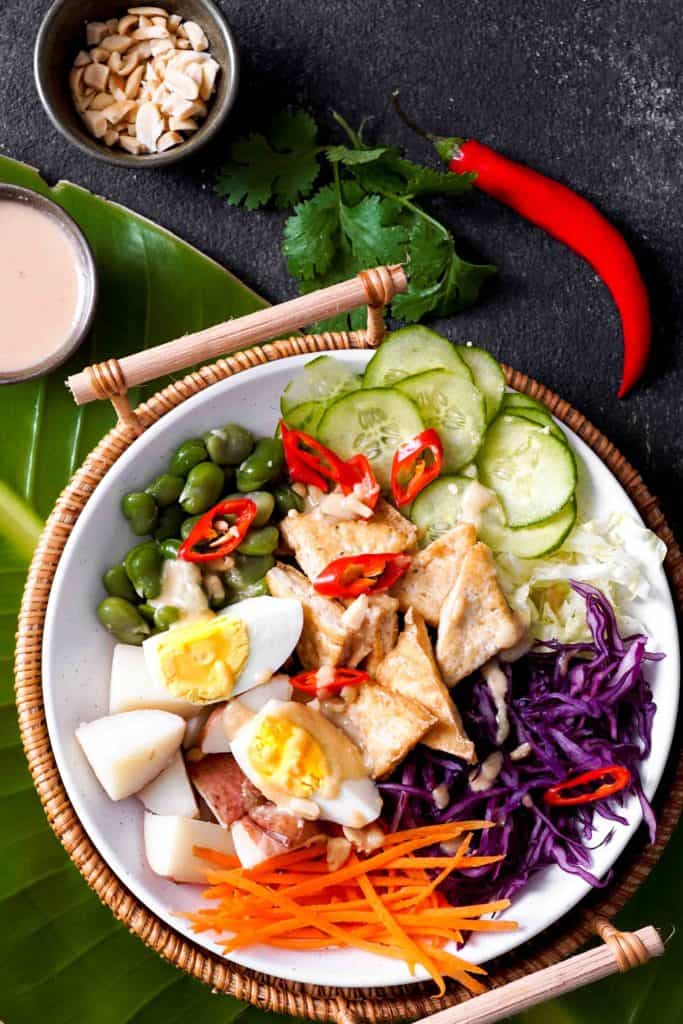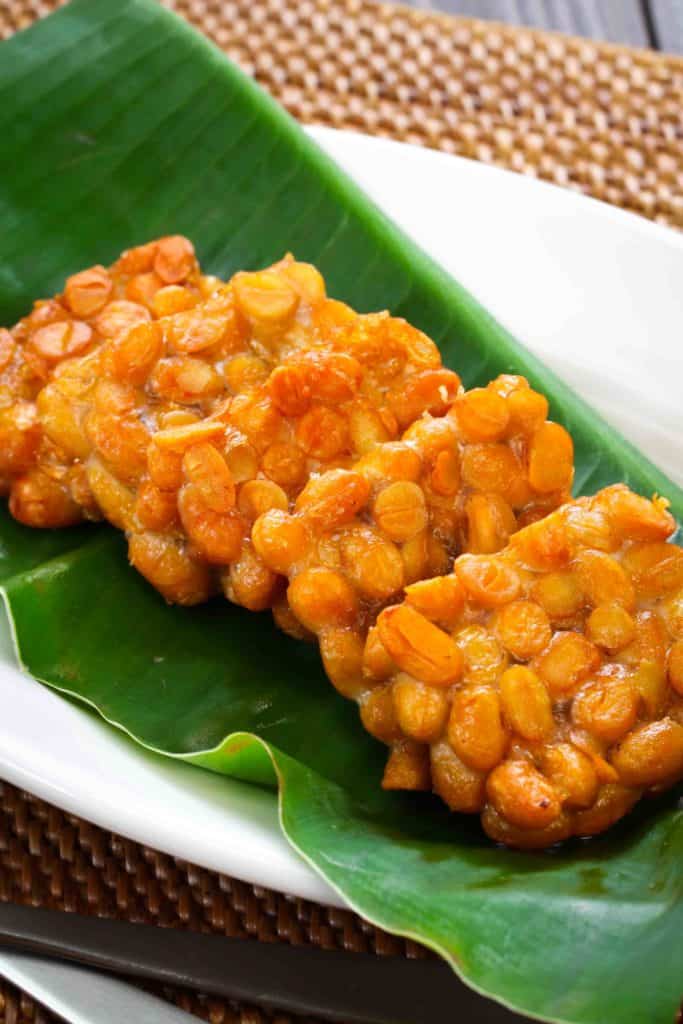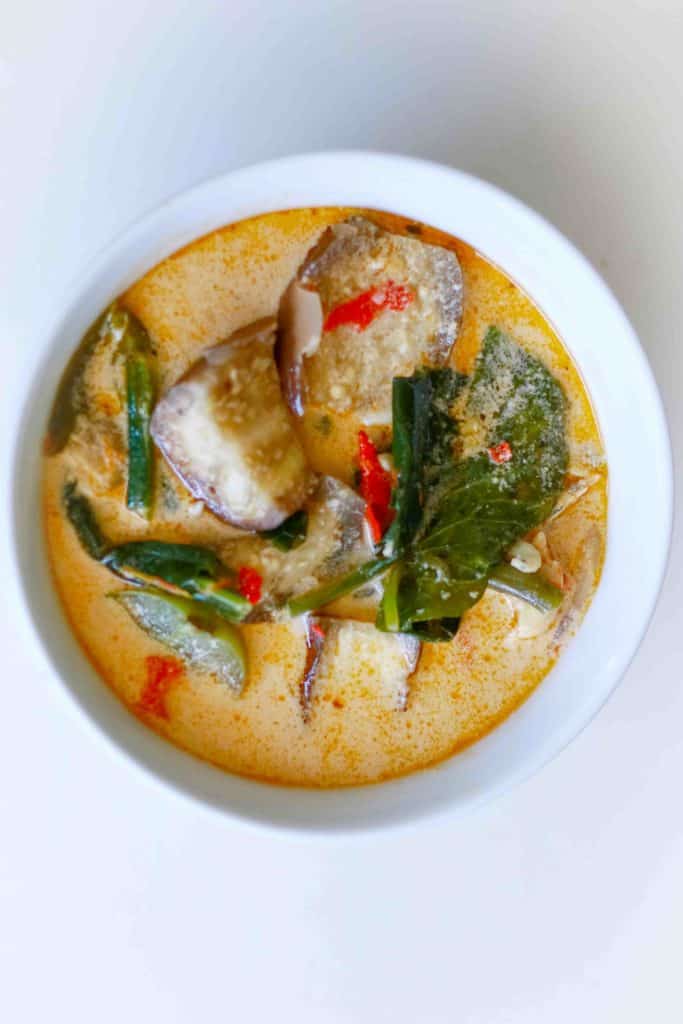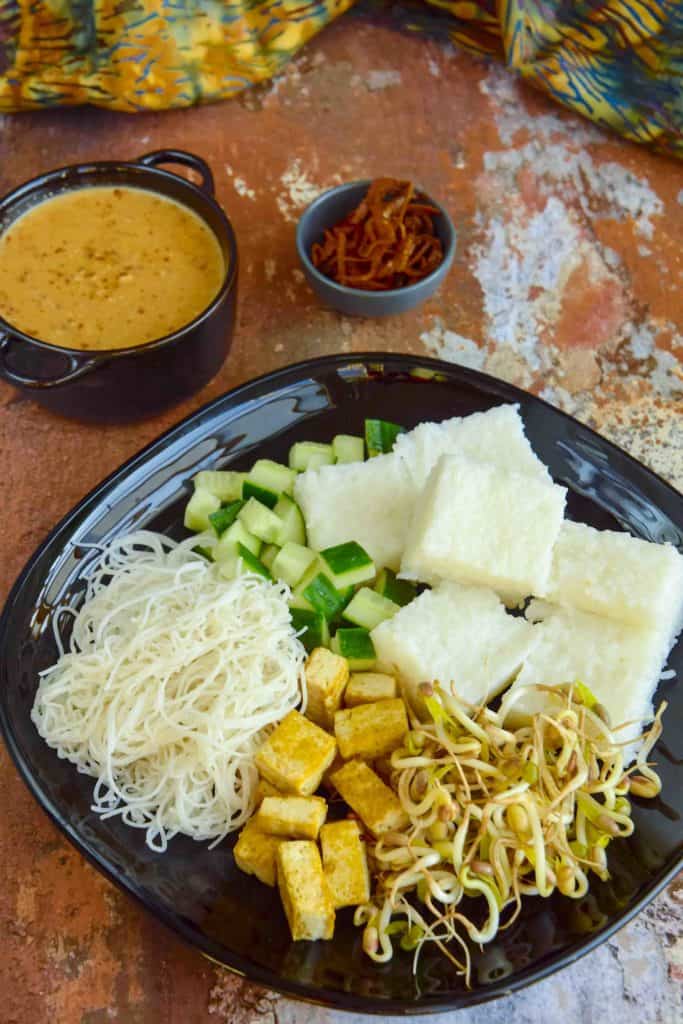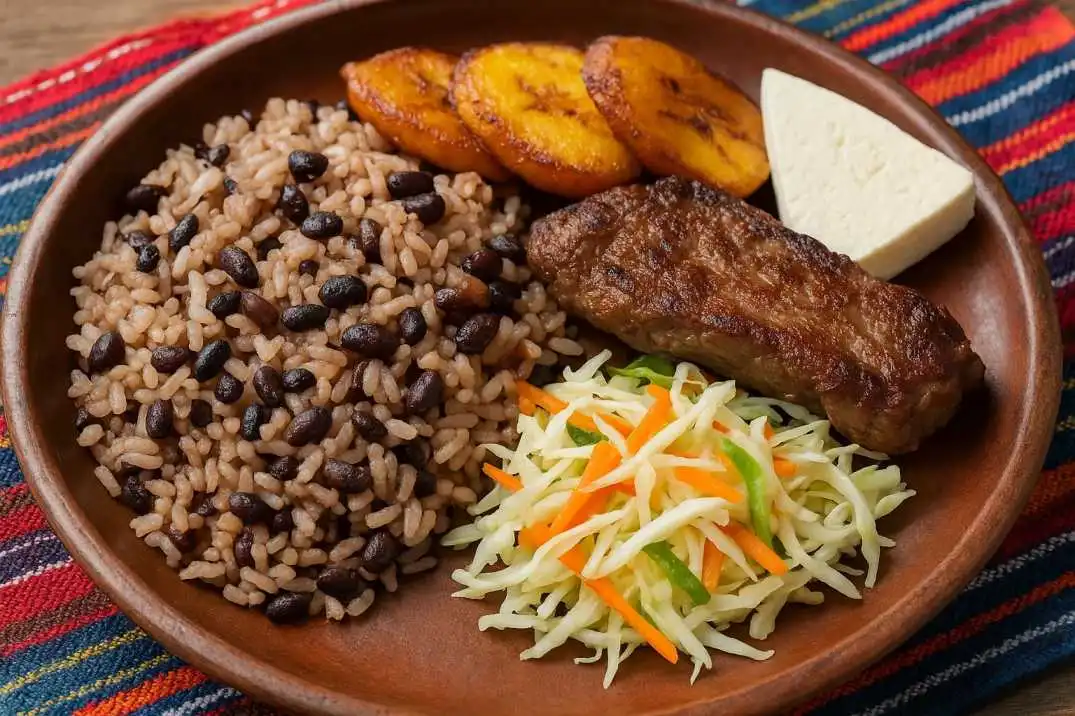Serving some of the weightier supplies in the world, in Indonesia vegetarian supplies is easy to find.
Indonesia has an incredible supplies culture, much like many other Asian countries. There are 6000 islands and 300 ethnic groups in Indonesia creating a diverse and vibrant mix of food.
It is largely based virtually the street supplies culture where many traditional dishes can be found at supplies stalls, often tabbed a warung or kedai.
Steamed rice (nasi) is normally the staple at any meal and forms the centerpiece at the table. While chicken, eggs, beef, fish, and milk are the staple proteins, Indonesian vegetarian supplies is incredibly popular.
Indonesian cuisine is highly regional, thus differs profoundly amongst the variegated regions and islands in the archipelago.
Influences include the Middle East, India, and China and the variety of vegetarian supplies is no different.
If you’re wanting to eat supplies that is exclusively vegetarian, Indonesia is the perfect place to do so.
In Indonesian sayur ways vegetable so alimony an eye on that when reading restaurant menus.
Indonesia Vegetarian Food
1. Bakwan Jagung / Corn Fritters
First on the vegetarian supplies list is bakwan jagung, moreover referred to as perkedel jagung.
It is an Indonesian street supplies snack made from corn and can moreover be used as a side dish or as an appetizer.
The corn is then mixed with flour, shallots, spring onion, egg, flour (wheat and rice), water, salt, and white pepper. The thrash is then fried in hot oil until golden brown.Â
3. Urap/Urab
Urap/urab is an Indonesian vegetarian salad that is made using steamed or boiled vegetables.
The vegetables are mixed with shaved coconut that has been lightly spiced and seasoned. Vegetables used for the dish include spinach, untried beans, Chinese water spinach, cabbage, and mung stone sprouts.
The dish is then topped with a combination of shredded coconut, kaffir lime leaves, a hint of chili, garlic, and shallots.
Although urap can be found throughout Indonesia, it is increasingly of a Javanese specialty.
Bakwan jagung are found throughout the country, sold by street supplies vendors and at the local markets.
2. Mie Tek Tek / Mie Goreng / Fried Noodles
These Javanese stir-fried noodles derive their name from the sound of the spatula hitting the wok – tek tek.
They are traditionally sold by street vendors who walk through the neighborhoods selling their goods. The hitting of the wok signals the vendors are nearby, ready to sell their Indonesian vegetarian food.
The dish is largely based on the Chinese grub mein dish but is normally a bit sweeter. This is due to the wing of a sweet Indonesian soy sauce.
Stir-fried vegetables, garlic, and chilies are mixed with egg noodles and tossed together to form this vegetarian dish.
Many Indonesians will add yellow to the dish too.
There are moreover many variations of mi tek tek as each region and vendor will have their own rendition of it.
Mie goreng translates directly to “fried noodles” and is found throughout the country.
Although the vegetarian option is highly popular, many warungs add some form of protein such as chicken, prawn, or beef.
4. Telur Belado
The next Indonesian vegetarian supplies on the list is telur belado, originating from West Sumatra.
This vegetarian dish in Indonesia includes eggs so it won’t be suitable for everyone.
Hard boiled eggs are deep-fried and then cooked in sambal balado – a sweet, sour, and spicy sauce.
It is this sauce that takes the unobtrusive egg to the next level.
Telur belado can work as both a main dish and as a side dish. They can be served on rice or be served together with other forms of protein. Or plane as a quick snack between meals.
While it can be made hands at home, it is weightier bought from an Indonesian street vendor at one of the many warung nasis.Â
5. Rujak
If you have decided to eat purely vegetarian, Indonesia is the perfect location to do so. Rujak, once then a dish of Javanese origin, is a salad comprised of both fruit and vegetables.
There are many variations of the salad, but worldwide ingredients include apple, cucumber, untried mango, pineapple, and papaya.
The dressing (sambal rujak) is a combination of sweet, salty, and spicy. It’s made up of tamarind, chili, palm sugar, water, and zestless shrimp paste.
Rujak is one of the most succulent vegetarian foods in Indonesia and is perfect as a side dish, snack, or dessert.Â
21 Most Exotic Fruits
6. Oncom
Originating from West Java, oncom is made from a wiring of soy pulp, cassava tailings, or peanut and coconut printing cake.
The wiring product is then fermented with mold to create either red or woebegone oncom.
This traditional Indonesia vegetarian supplies item is prepared in various ways.
It can be deep-fried to make goreng fritters. It can be cooked in comic leaves to make a dish tabbed pepes.
Or it can be roasted and mixed with steamed rice to form a dish on its own.
Because it is fermented, there are a number of health benefits associated with oncom.
Some of these include boosting metabolism, protecting the digestive system, and reducing cholesterol.
7. Gado Gado
Literally translated to “mix mix”, this Indonesian vegetarian supplies staple is considered a super salad.
It’s packed with fresh vegetables, stone sprouts, fried tofu, and boiled eggs. Finished off with a slightly spicy and umami peanut dressing sauce, it’s simply delicious.
Gado gado is recognized as one of the five national Indonesian supplies dishes, and rightly so. It is found in scrutinizingly every part of Indonesia, at street supplies vendors, local markets, and restaurants.
There are many variations of the dish depending on the region, but you can count on this: It’s going to be fresh. It’s going to be crunchy. It’s going to be flavorful.
8. Nasi Goreng / Fried Rice
Nasi goreng is one of the five national dishes in Indonesia, modeled on the Chinese egg and vegetable fried rice dish.
It is moreover incredibly popular in other parts of Southeast Asia too.
There is no single recipe for nasi goreng as are so many variegated variations of this staple Indonesian dish.
The main ingredients include rice, an variety of vegetables, garlic, and an variousness of seasonings.
It is often mixed with sweet Indonesian soy sauce (kecap manis), thus giving it its visionless color.
The savor profile is sweet, savory, spicy, and of course, umami.
It is believed that the origins of the dish stemmed from reducing the value of rice wastage.
Therefore, there are no two ways well-nigh it. The rice used for nasi goreng must be cold, day-old rice. Period.
It is scrutinizingly unchangingly topped off with a fried egg as well as fresh chili and spring onion.Â
9. Tempe Goreng
This simple, yet succulent vegan dish is a staple found wideness Indonesia.
A souse of raw garlic, whiffy spices, and water is prepared. The raw tempe is then marinated in this souse for a few minutes.
Finally, it is deep fried until golden brown and crispy.
They are the perfect snack on their own but can moreover be enjoyed withal with steamed rice and sambal. It is enjoyed at any time of the day or night, by both locals and tourists alike.
Tempe goreng is believed that tempe goreng can help reduce the risk of heart attacks, heart disease, and plane strokes.
It moreover assists in lowering cholesterol and thoroughbred sugar levels.
10. Tahu Bacem / Deep Fried Tempeh
Originating from the Mataraman region of inside Java, tahu bacem can be enjoyed as a snack or a main dish.
Spiced tempeh is deep fried until crispy and golden brown.
These fermented soybean cakes are boiled with a traditional mix until the water has all evaporated. This way, households or vendors are worldly-wise to prolong the lifespan of the ingredient.
It’s moreover a unconfined way to infuse other flavors into the cakes.
When required, the tempeh is taken out of the refrigerator, fried, and served with a whole fresh chili.
The dish is moreover fully vegan, which is an widow wholesomeness for those who follow the vegan diet.Â
11. Orek Tempe / Spicy Tempeh
Indonesia vegetarian supplies includes so many ways to eat tempeh. It could be its own post.
Orek tempe is a fermented soybean cake. It is both sweet and spicy and are considered protein bombs.
They moreover offer other health benefits such as calcium, iron, magnesium, and prebiotics.
The process to make orek tempe from start to finish takes well-nigh three or four days.
They can be found scrutinizingly anywhere in the country, from street vendors to high-end supermarkets.
This naturally cultured and fermented snack is overly popular amongst both the Indonesian vegetarian population and vegans alike.
Once the wiring is fermented, it can be deep fried and eaten on its own as a snack.
It can moreover be served with steamed rice and other vegetables to form a full meal.
A succulent dipping sauce is served with it using the famous kecap manis mixed with chili, shallots, garlic, and oil.
12. Sayur Lodeh
Once again, this Indonesia vegetarian supplies is of Javanese origin. Although it is popular throughout Indonesia.
It is moreover a vegetable soup but unlike sayur asem, sayur lodeh is coconut milk based.
Ingredients such as long beans, chili peppers, eggplant, tofu, and tempeh are cooked in coconut milk withal with whiffy spices.
This bumbu spice mix contains coriander, turmeric, shallot, garlic, candlenut, and kencur powder.
Sayur lodeh is wontedly served with steamed rice or slices of lontong rice cake. Although it is a traditional Indonesian vegetarian supplies item, it is wontedly served with salted fish, chicken, or beef.
13. Sayur Asem / Vegetable Soup
Sayur asem is a type of Indonesian vegetable soup that originated from the Sudanese people of West Java, Banten, and Jakarta.
Local vegetables are cooked in a tamarind goop with an widow spice paste. This paste is made up of galangal, ginger, chilies, shallots, and garlic and forms the wiring of the soup.
Other whiffy ingredients include lemongrass, tamarind, turmeric, and white pepper.
A hint of coconut palm sugar is moreover widow to wastefulness out the dish.
Sayur asem is both sour and refreshing, with a slight acidic whet to it. It is moreover one of the most popular vegetarian foods in Indonesia, and rightly so.
14. Ketoprak
Ketoprak is flipside one of the wondrous vegetarian dishes misogynist in the country.
It is comprised of fried tofu, steamed rice cake, vegetables, rice vermicelli and a delectable peanut dressing.
Many variations exist, but the dish is normally topped off with crispy shallots and sweet Indonesian soy sauce.
Although it is worldwide throughout Indonesia, its routes stem from Jakarta and West Java.Â
15. Jogja Gudeg / Jackfruit Stew
This Indonesian jackfruit stew originated in Yogyakarta municipality on the island of Java. It’s moreover popular in the inside region of the island.
Young jackfruit is shredded and then boiled together with palm sugar and coconut milk. This is a lengthy process and is washed-up so in a traditional Javanese soil pot over a wood or soot fire.
A mixture of aromatics such as candlenut, coriander, shallots, garlic, galangal, and bay leaves are widow to the pot.
Teak leaves are the final addition, giving the stew its red hue.
Although the dish is considered an Indonesian vegetarian food, many renditions include the wing of yellow and eggs.Â
16. Lontong Cap Go Meh
Lontong cap go meh is a traditional Javanese dish, although it is served nationwide in Indonesia.
An elongated rice cake, lontong is cooked in comic leaves.
It is then served with a variety of accompaniments such as vegetables in a coconut milk soup, pickles, or a hard-boiled marble egg.
It is most wontedly consumed by the Chinese Indonesian polity during the cap go meh celebration.
This lantern festival occurs on the 15th day of the first month in the Chinese lunisolar calendar.
17 Indonesia Vegetarian Supplies to Devour is a post from: Bacon is Magic


